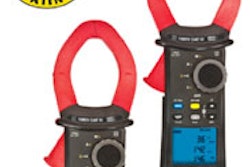Linear actuators are commonly divided into two main types: fluid power actuators that operate on differential pressure and electromechanical actuators driven by an electric motor. The type of actuator used plays a critical role in the machine’s performance, initial cost, and operating costs.
Linear actuation plays a critical role in a wide range of products and processes in factory automation, packaging, medical devices, and many other fields. Linear actuators are commonly divided into two main types: fluid power actuators that operate on differential pressure and electromechanical actuators driven by an electric motor. The type of actuator used plays a critical role in the machine’s performance, initial cost, and operating costs.
The traditional sweet-spot for pneumatic actuators has been, and continues to be, moving relatively light loads back and forth between two positions, with the travel at each end controlled by the mechanical limits on the actuator or hard stops. These are often called “bang-bang” applications because of the noise created as the actuator reaches each end of its limit of travel. Position control is not required at any point other than the end positions. In these applications, pneumatic actuators typically offer a combination of low initial cost and high speed, which makes them an ideal choice for simple motion applications.
Hydraulic actuators are used in high force applications, with forces greater than 25 times that of a pneumatic cylinder of the same frame size. They run at typical line pressures of 2,500 psi, compared with a pneumatic cylinder that runs at 90 psi (or less). Hydraulic actuators have the same limitations as pneumatic actuators in that their motion profile is difficult and expensive to control.
Control Over Motion & Force
As machinery becomes more sophisticated, productive, accurate, and safe, it requires more control of position, velocity, or force throughout the range of motion. More accurate control can be accomplished with pneumatics using proportional regulators and valves, but this considerably raises the cost and complexity of the installed system as well as the maintenance expenses. The compressibility of air also provides inherent limitations on the level of control that can be achieved with pneumatic actuators. It’s also difficult or impossible for pneumatic actuators to provide the slow, controlled speeds that are needed in certain applications.
One large packaging OEM found benefits in their ability to control the motion profile and easily change cycle times by adjusting the product volumes and line speeds of the machine. The first part of the movement has a rapid motion with no force; basically a move to position. When the actual pressing of the product occurs, the actuator decelerates to a lower speed and makes sure the pressing stage is as controlled as possible. The actuator then returns at a very high speed. The characteristics of the product require very smooth motion and the entire motion profile must be done in a way that assures minimal power usage. In fact, power is only consumed when the actuator is in motion.
Electromechanical actuators provide significant advantages in more complex applications, because they provide the engineer with complete control over the motion profile. Many actuators have integral encoders that can be used to accurately control velocity and position. Others provide the ability to control and monitor torque, and therefore applied force. Electromechanical actuation systems are programmable, so the force and motion profile can be changed in software without having to shut down and reconfigure the machine.
The increased controllability of electromechanical actuators can often be used to eliminate the need for changeover when switching from one product to another. The time savings can be substantial in packaging applications where numerous package sizes may run in a single shift.
Energy Consumption
Energy consumption is becoming an increasingly important area to consider when selecting between alternative linear motion technologies. Fluid power can hold pressure constant without applying additional amounts of energy. On the other hand, the compressor used to drive a pneumatic actuator must be constantly running, even when the actuator is not performing. Losses due to air leaks add to the operating costs of pneumatic systems.
Pneumatics and hydraulics also go through a two-step energy conversion process that results in relatively low energy efficiency. Electromechanical actuators, on other hand, offer considerable energy savings in the majority of applications because they use power only when they are performing work. The ball and roller screws average efficiencies around 90%.
Clean Operation
Linear actuators are more frequently used in applications that require clean operation such as in the food, beverage, packaging, medical, and electronics manufacturing industries. When hydraulic actuators are substituted, oil leakage and disposal can present a problem. Pneumatic actuators present similar issues due to the presence of oil and other impurities in compressed air supplies — the exhausted air typically needs to be filtered to remove impurities before it is released into the environment. Electromechanical actuators, on the other hand, have considerably less impact on the environment, and are strongly preferred for applications where clean operation is important.
Total cost of ownership is considered in nearly every application. Fluid power actuators usually have a cost advantage in applications where a power source is already available. This is because adding a new axis only requires a cylinder, valves, hoses, and fittings. Electromechanical actuators are usually less expensive in applications where fluid power is not available. As previously mentioned, energy consumption is also a significant factor when considering total cost of ownership. The time it takes to recover the higher premium paid for electromechanical actuators will vary depending on the particular application, but it is not uncommon for it to occur in less than a year through reduced energy consumption.
Electromechanical actuators also reduce the complexity of the design process because they are easier to specify and design than pneumatic or hydraulic actuators. It takes three steps to determine the size of an actuator for an application: measure the load, determine the duty cycle, and specify stroke and retract length. Loads can be determined with software packages that simulate mechanical systems or by performing measurements with a load cell on the actuator. Electromechanical actuators can easily be configured by the manufacturer to fit the requirements of any application by changing gear ratios, leadscrew, motor, and electronic control parameters to predictably affect the key performance variables.
Many factors are driving the migration from fluid power to electromechanical solutions.
1. Electromechanical actuators increase productivity by improving controllability, shortening changeover times, and improving accuracy and reliability.
2. They reduce operating cost by improving energy efficiency, increasing up-time, and reducing maintenance.
3. Finally, electromechanical systems are simply cleaner and quieter than fluid power systems.
For more information visit www.thomsonlinear.com.























